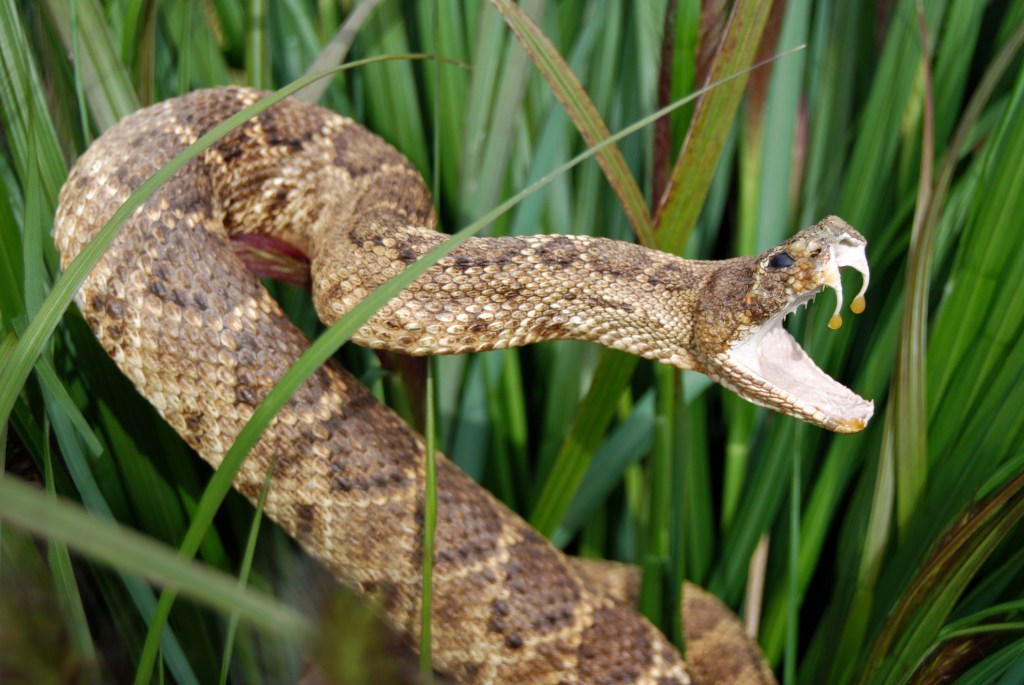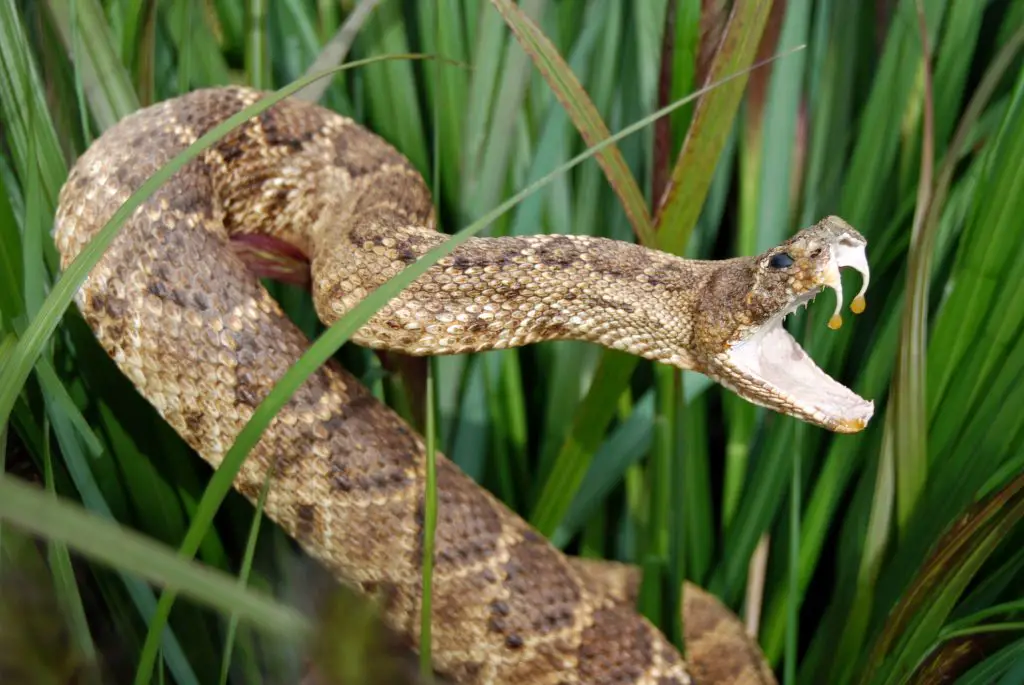Rattlesnakes are venomous and dangerous creatures that are found in many regions of the world. If you encounter one, it’s important to know how to deal with it safely. In this guide, we’ll explore the best practices for killing a rattlesnake without putting yourself or others at risk.
Whether you’re a hiker, camper, or just someone who lives in an area with a high rattlesnake population, it’s essential to be prepared for a potential encounter. With the tips and tricks in this guide, you’ll be equipped to handle a rattlesnake safely and with confidence. So let’s get started and learn how to kill a rattlesnake the right way.
If you encounter a rattlesnake, it’s important to kill it safely. Here’s how:
- Keep a safe distance from the snake, at least six feet away.
- Use a long-handled tool, such as a shovel or hoe, to strike the snake’s head.
- Be sure to aim for the head, as this is the most effective way to kill the snake quickly.
- Dispose of the snake’s body properly, ensuring that it can’t be accessed by other animals or people.
Remember to always exercise caution when dealing with dangerous animals and consider contacting a professional wildlife removal service if you’re unsure of how to handle the situation.

How to Kill a Rattlesnake Safely?
1. Determine if it is Necessary to Kill the Rattlesnake
If you encounter a rattlesnake, the first thing to do is assess the situation. Is the snake in a place where it poses a danger to people or pets? If so, it may be necessary to kill the snake. However, if the snake is in a remote area or not posing an immediate threat, it may be best to leave it alone. Rattlesnakes play an important role in the ecosystem and help control rodent populations.
If you do decide to kill the rattlesnake, it is important to do so safely and humanely.
Benefits of Leaving Rattlesnakes Alone
– Rattlesnakes help control rodent populations
– They play an important role in the ecosystem
– They are not aggressive unless provoked
2. Identify the Rattlesnake
There are several species of rattlesnakes, and some are more dangerous than others. It is important to identify the species of rattlesnake before attempting to kill it. This will help you determine the appropriate method of killing the snake.
Rattlesnake Species and Their Distribution
| Rattlesnake Species | Distribution |
|---|---|
| Western Diamondback Rattlesnake | Southwest United States and Mexico |
| Timber Rattlesnake | Eastern United States |
| Eastern Diamondback Rattlesnake | Southeast United States |
3. Choose a Safe and Humane Method
There are several methods of killing a rattlesnake, but not all are safe or humane. Some methods can result in the snake suffering unnecessarily. It is important to choose a method that is both safe and humane.
Safe and Humane Methods of Killing a Rattlesnake
- Shotgun
- Decapitation
- Captive Bolt Gun
- CO2 Gas
4. Approach the Snake Carefully
Approach the snake slowly and cautiously. Do not make any sudden movements or loud noises that could startle the snake. Keep a safe distance from the snake and be prepared to move quickly if necessary.
What to Wear When Approaching a Rattlesnake
- Tall boots
- Long pants
- Thick gloves
5. Position Yourself for the Kill Shot
Position yourself so that you have a clear shot at the snake’s head. Aim for the head, just behind the eyes. This is the most humane way to kill a rattlesnake.
VS
– Decapitation is not recommended as it can result in the snake suffering unnecessarily
– CO2 gas is not recommended as it is difficult to use effectively
6. Take the Shot
Take the shot carefully and make sure that you hit the snake’s head. It is important to be accurate to ensure that the snake is killed quickly and humanely.
What to Do After You Take the Shot
- Check that the snake is dead
- Dispose of the snake properly
- Clean up the area to prevent the attraction of other snakes or predators
7. Dispose of the Snake Properly
It is important to dispose of the snake properly to prevent the attraction of other snakes or predators. Do not leave the snake in the open where it could attract other animals. Bury the snake or place it in a sealed bag for disposal.
Benefits of Proper Disposal of Rattlesnakes
– Prevents the attraction of other snakes or predators
– Helps maintain a healthy ecosystem
8. Clean Up the Area
After killing a rattlesnake, it is important to clean up the area to prevent the attraction of other snakes or predators. Remove any debris or objects that could provide cover for snakes or rodents.
What to Do to Prevent Attraction of Other Snakes or Predators
- Remove debris or objects that could provide cover for snakes or rodents
- Keep the area clean and free of food scraps or other attractants
- Consider installing snake-proof fencing around the area
9. Be Prepared for Future Encounters
Encountering a rattlesnake can be a frightening experience, but it is important to be prepared for future encounters. Learn how to identify rattlesnakes and educate yourself on safe and humane methods of killing them.
What to Do to Prepare for Future Encounters
- Learn how to identify rattlesnakes
- Practice safe and humane methods of killing rattlesnakes
- Carry a snakebite kit and know how to use it
10. Conclusion
Killing a rattlesnake is not something to be taken lightly. It is important to assess the situation and determine if it is necessary to kill the snake. If it is necessary, choose a safe and humane method and be prepared to take the shot carefully. Dispose of the snake properly and clean up the area to prevent the attraction of other snakes or predators. Finally, be prepared for future encounters and educate yourself on safe and humane methods of killing rattlesnakes.
Frequently Asked Questions
Here are some common questions people ask about safely killing a rattlesnake.
What are the safest methods to kill a rattlesnake?
The safest way to kill a rattlesnake is to use a firearm. Make sure you are proficient with your firearm and can handle it safely. If you are not comfortable with firearms, you can use a long-handled hoe or shovel to decapitate the snake. Be sure to stand a safe distance away from the snake and aim for the area just behind the head.
Never attempt to kill a rattlesnake with your bare hands or with a tool that requires you to get too close to the snake. This can be dangerous and can result in a serious bite.
What should I do after killing a rattlesnake?
After safely killing a rattlesnake, it’s important to dispose of the body properly. Use a shovel or other tool to pick up the snake’s body and place it in a sealed plastic bag. You can then dispose of the bag in your regular trash.
It’s also a good idea to check your property for any other potential snake hiding spots, such as woodpiles or tall grasses, and remove them if possible.
Can I use snake repellents instead of killing a rattlesnake?
While there are snake repellents available on the market, they are not always effective and can pose a risk to other animals and the environment. It’s best to focus on prevention measures, such as removing potential hiding spots and keeping your property clean and tidy, rather than relying on repellents.
If you are dealing with a rattlesnake that has already taken up residence on your property, it’s best to call a professional wildlife removal service to safely and humanely relocate the snake.
What should I do if I accidentally come across a rattlesnake?
If you come across a rattlesnake, the best thing to do is to slowly and calmly back away from the snake. Do not try to touch or interact with the snake in any way. If the snake is in a location where it poses a danger to humans or pets, it’s best to call a professional wildlife removal service to safely relocate the snake.
It’s also a good idea to educate yourself and your family on how to identify and avoid potential snake habitats, such as rocky outcroppings or tall grasses.
How can I protect my pets from rattlesnake bites?
There are a few steps you can take to protect your pets from rattlesnake bites. First, keep your pets on a leash when walking or hiking in areas where rattlesnakes are known to live. Second, consider getting your pets vaccinated against snake venom. Third, learn how to identify the signs of a rattlesnake bite, such as sudden weakness or collapse, and seek veterinary care immediately if you suspect your pet has been bitten.
Finally, it’s important to remember that prevention is key. Keep your property clean and tidy, remove potential snake hiding spots, and educate yourself on how to avoid potential snake habitats.
How to kill a Rattlesnake Properly
In conclusion, knowing how to kill a rattlesnake safely is important for those who live in areas where these venomous snakes are common. By following the proper techniques and using the right equipment, you can eliminate the threat of a rattlesnake in your surroundings without putting yourself or others in danger.
Remember to always be aware of your surroundings and avoid areas where rattlesnakes may be present. If you do encounter a rattlesnake, keep a safe distance and do not attempt to handle it unless you are properly trained and equipped. Instead, call a professional wildlife removal service for assistance.
By taking the necessary precautions and following the guidelines for safely killing a rattlesnake, you can protect yourself and those around you from the potentially deadly effects of their venom. Stay informed, stay safe, and always be prepared for any encounters with these fascinating and dangerous creatures.


